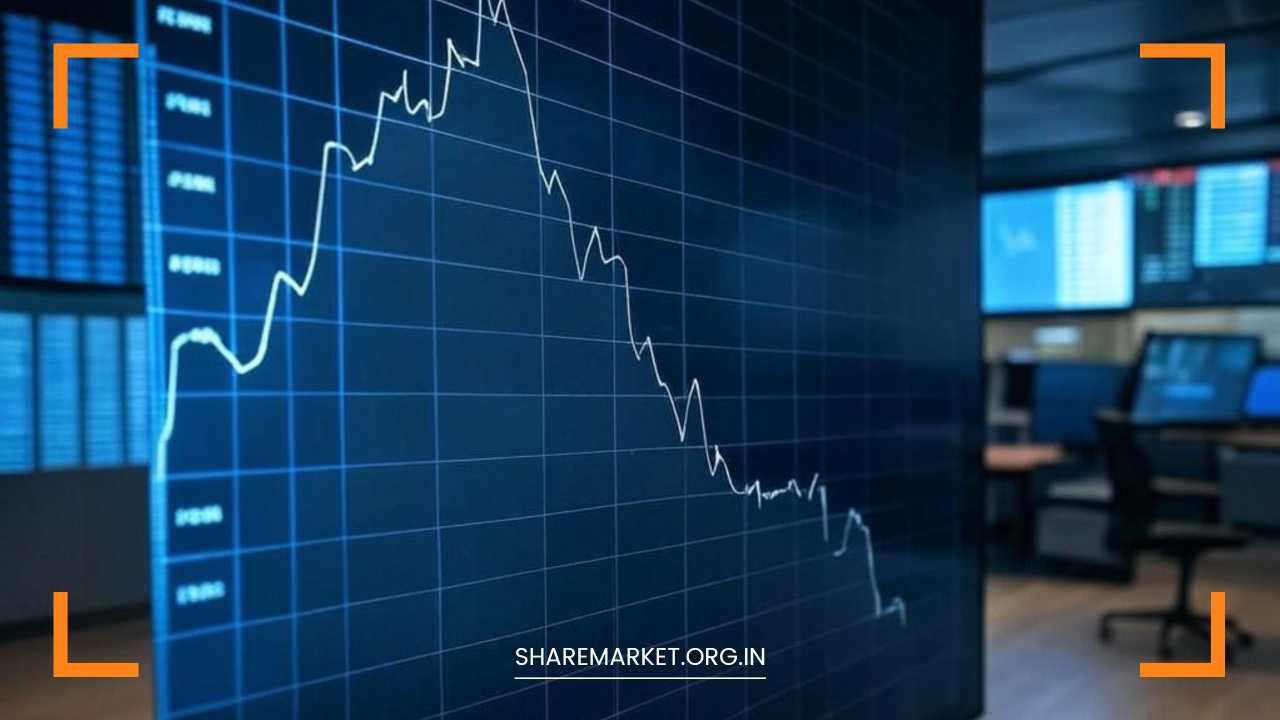Stock Market Crash: Rs 11 Lakh Crore Lost in a Day as Sensex Plunges 1258 Points

Stock Market Crash
Share Market Crash: ₹11 Lakh Crore Vanishes in a Day as Sensex Dips 1,258 Points
The Indian stock market experienced a severe crash on January 6, 2025, with investors losing a staggering ₹11 lakh crore in a single trading session.
Amid heightened global uncertainties and domestic concerns, the BSE Sensex plunged by 1,258 points (1.59%), closing at 77,964.99, while the NSE Nifty saw a similar decline, dropping 388.70 points (1.62%) to settle at 23,616.05.
This sharp decline is a stark reminder of the volatility and risks associated with the stock market, where sentiment can shift rapidly due to external shocks and investor fear.
Market Sentiment: Panic Spreads Across Dalal Street
The Indian stock market’s steep fall on January 6 was driven by multiple factors, all of which combined to create a perfect storm.
The primary trigger for the market’s collapse was the growing apprehension over a potential new HMPV (Human Metapneumovirus) virus outbreak, which some experts have likened to the earlier Corona pandemic.
News about rising cases and government warnings led to widespread panic, causing investors to liquidate positions in fear of another global health crisis.
This uncertainty compounded existing concerns about the economy, as investors began to question the stability of corporate earnings amidst such disruptions.
In addition to this, there was growing caution about the forthcoming quarterly earnings reports. Analysts and market participants have been warning that corporate profits might not meet expectations due to a slowing economy, higher input costs, and fluctuating demand.
As a result, the market entered a risk-off mode, with investors opting to pull back from equities and seek safer assets.
Finally, weak global signals also contributed to the day’s crash. The global markets have been under pressure due to concerns over inflationary pressures in major economies, interest rate hikes by central banks, and geopolitical risks, particularly in regions like Europe and East Asia. These global concerns exacerbated the selling pressure in the Indian markets.
₹11 Lakh Crore Lost in One Day: Market Capitalization Shrinks
The scale of the sell-off was underscored by the sharp decline in the total market capitalization (market cap) of all listed companies on the Bombay Stock Exchange (BSE).
The market cap fell to ₹438.95 lakh crore, down from ₹449.78 lakh crore on the previous trading day (January 3, 2025). In monetary terms, this represents a massive loss of ₹10.83 lakh crore in just one day.
For perspective, ₹10.83 lakh crore is equivalent to more than half of the combined market value of the country’s top 10 companies, which include the likes of Reliance Industries, Tata Consultancy Services (TCS), and HDFC Bank.
Such a loss highlights the sensitivity of investor wealth to market fluctuations and underscores the importance of market sentiment in driving stock prices.
This loss was not limited to institutional investors alone. Retail investors, who have increasingly become active participants in the stock market, were also hit hard.
The broader market indices reflected this distress, as retail-heavy sectors such as midcaps and smallcaps were hit even harder than large-cap stocks.
Sectoral Breakdown: No Safe Haven
The broader market showed signs of severe distress, with nearly all BSE sectoral indices ending in the red.
The BSE Midcap index fell by 2.44%, while the Smallcap index plunged by 3.17%. These declines were significantly worse than the losses observed in the large-cap space, suggesting that riskier, more speculative investments were particularly affected by the broader market sell-off.
Among the various sectors, the utility, metal, realty, power, and oil and gas stocks experienced the sharpest declines.
The utility sector, for instance, saw a 3-5% drop in key stocks, as investor sentiment soured due to the broader macroeconomic concerns. Metal stocks were impacted by concerns over global demand, particularly from China, which is a major consumer of metals.
Realty stocks, too, saw a marked downturn, with fears of economic slowdown weighing on the real estate market’s outlook.
In contrast, sectors like pharmaceuticals and IT services managed to stay relatively resilient, with some stocks posting minor gains. However, even within these sectors, the broader market trend of negative sentiment was too strong to offset.
Stocks in Focus: The Big Losers and Gainers
As is typical in volatile market conditions, there were notable individual stock movements. Of the 30 Sensex stocks, only three closed in the green, indicating the extent of the broader market carnage.
- Titan emerged as the top performer among the Sensex stocks, with its share price rising by 0.60%. The stock benefited from its defensive nature, as investors tend to flock to companies with strong brand recognition and consistent growth even in uncertain times.
- HCL Technologies and Sun Pharma also closed marginally higher, up by 0.26% and 0.01%, respectively. Both companies are considered relatively stable within their sectors, with HCL benefiting from strong demand in the IT services space and Sun Pharma finding support from its leading position in the pharmaceutical market.
On the flip side, the biggest losers were dominated by cyclical and commodity-heavy stocks, which are typically more sensitive to economic shifts and global market conditions.
- Tata Steel suffered the largest drop, falling by 4.41%. The company’s stock was hit hard by concerns about global steel demand, especially in light of slowing economic growth in key markets.
- Other heavy losses were seen in stocks like NTPC, Kotak Mahindra Bank, Power Grid, and Zomato, which all saw declines ranging from 2.95% to 3.65%. These losses reflect both sector-specific weaknesses (e.g., energy and banking) and broader market fears.
Market Breadth: A Distressed Market
The overall market breadth on January 6 was overwhelmingly negative. Of the 4,244 stocks traded on the Bombay Stock Exchange, only 657 managed to close with gains, while a staggering 3,471 stocks ended the day in the red.
This broad-based decline suggests that the market’s downfall was not limited to a few sectors or stocks but was widespread, affecting most corners of the market.
Despite the overall market downturn, some stocks still managed to reach new 52-week highs. A total of 176 stocks touched their 52-week highs during the day, suggesting that there were pockets of strength within the broader market.
However, the number of stocks that hit new 52-week lows (113) further underscores the breadth and intensity of the market’s decline.
What Lies Ahead for the Indian Market?
The dramatic fall in the stock market on January 6 raises critical questions about the outlook for the Indian economy and financial markets in the coming months.
With concerns over a potential health crisis, weak global economic signals, and the earnings season around the corner, the market appears to be in a highly volatile phase.
While some analysts remain optimistic about the medium-to-long-term growth prospects of the Indian economy, others caution that the market could face further turbulence in the near term.
Investors are advised to stay vigilant, manage risks, and consider diversifying their portfolios to protect themselves from such sharp market fluctuations.
As always, long-term investors should remain focused on the fundamentals of companies they invest in, rather than reacting to short-term market movements driven by sentiment and uncertainty.

















